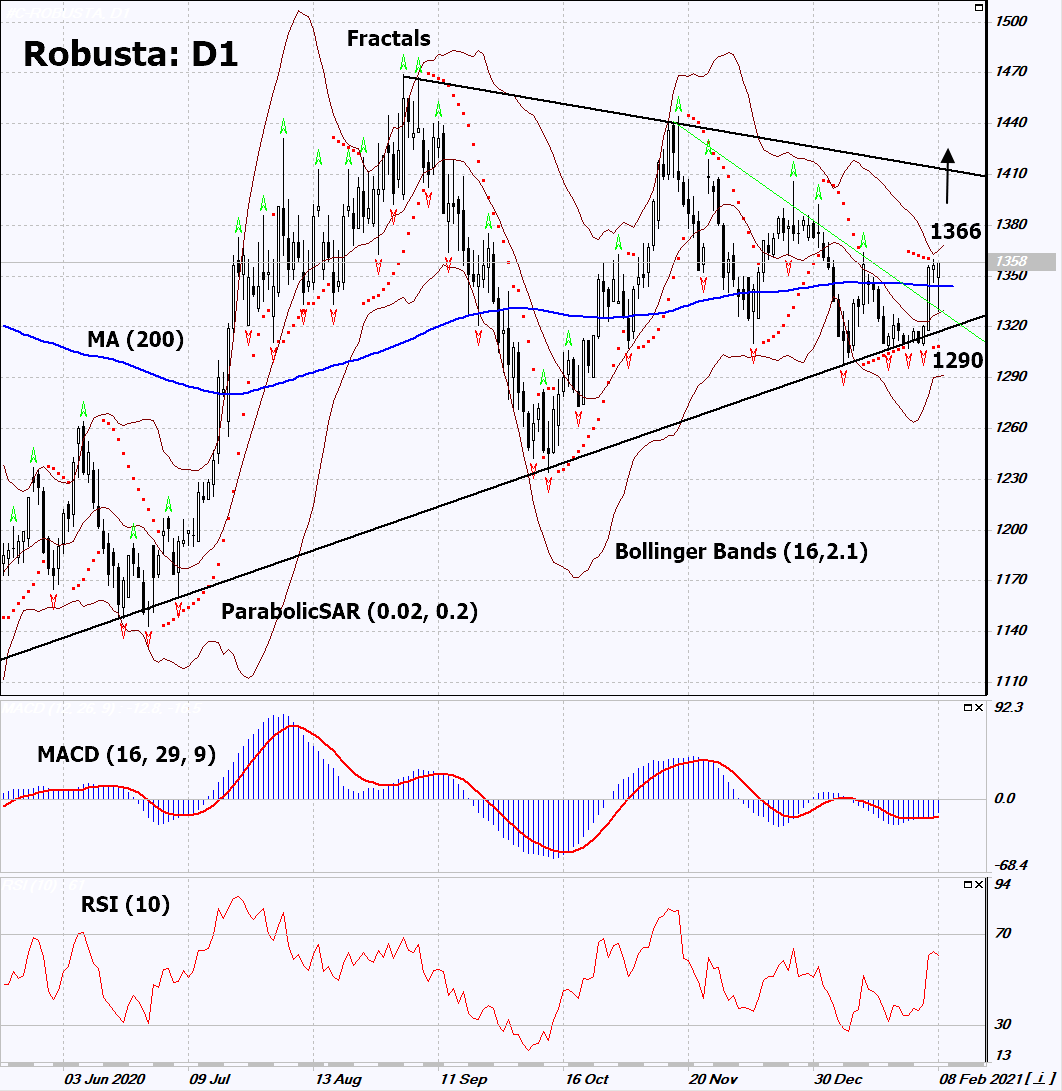Recommendation for Robusta Coffee:Buy
Buy Stop : Above 1366
Stop Loss : Below 1290
| Indicator | Value | Signal |
|---|---|---|
| RSI | Neutral | |
| MACD | Buy | |
| MA(200) | Neutral | |
| Fractals | Neutral | |
| Parabolic SAR | Buy | |
| Bollinger Bands | Buy |
Chart Analysis
On the daily timeframe, Robusta: D1 failed to break through the lower border of the long-term triangle and is moving towards its upper border. A number of technical analysis indicators formed signals for further growth. We do not exclude a bullish move if Robusta rises above the last upper fractal and upper Bollinger band: 1366. This level can be used as an entry point. We can place a stop loss below the lower Bollinger line and the Parabolic signal: 1290. After opening a pending order, we move the stop loss following the Bollinger and Parabolic signals to the next fractal low. Thus, we change the potential profit/loss ratio in our favor. After the transaction, the most risk-averse traders can switch to the four-hour chart and set a stop loss, moving it in the direction of the bias. If the price meets the stop loss (1290) without activating the order (1366), it is recommended to delete the order: the market sustains internal changes that have not been taken into account.
Fundamental Analysis
Vietnam may cut coffee production. Will the Robusta quotes rise?
The Vietnam National Coffee Association predicts a 10-15% cut in coffee production in Vietnam this year due to poor weather conditions and lower investment amid low prices. Vietnam General Statistics Office reported a reduction in coffee exports from Vietnam in January 2021 to 120 thousand tons. This is 17.6% less compared to January 2020. Vietnam mainly produces Robusta coffee. Note that according to the Commitment of Traders (COT), Robusta coffee net shorts reached a 6-month high. Their closing may support the growth of prices. In general, quotes for all coffee varieties can be highly impacted by the weather in Brazil. Earlier, the Brazilian national agricultural statistics agency Conab expected the arabica production in 2021 to decline 35.7% in Brazil to a 12-year low due to drought.
